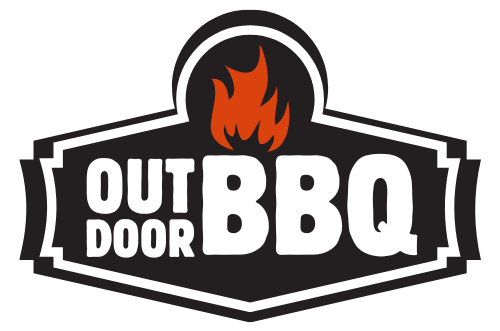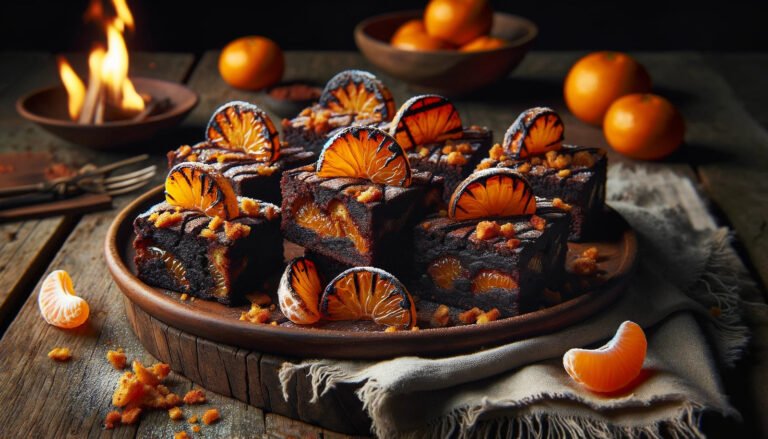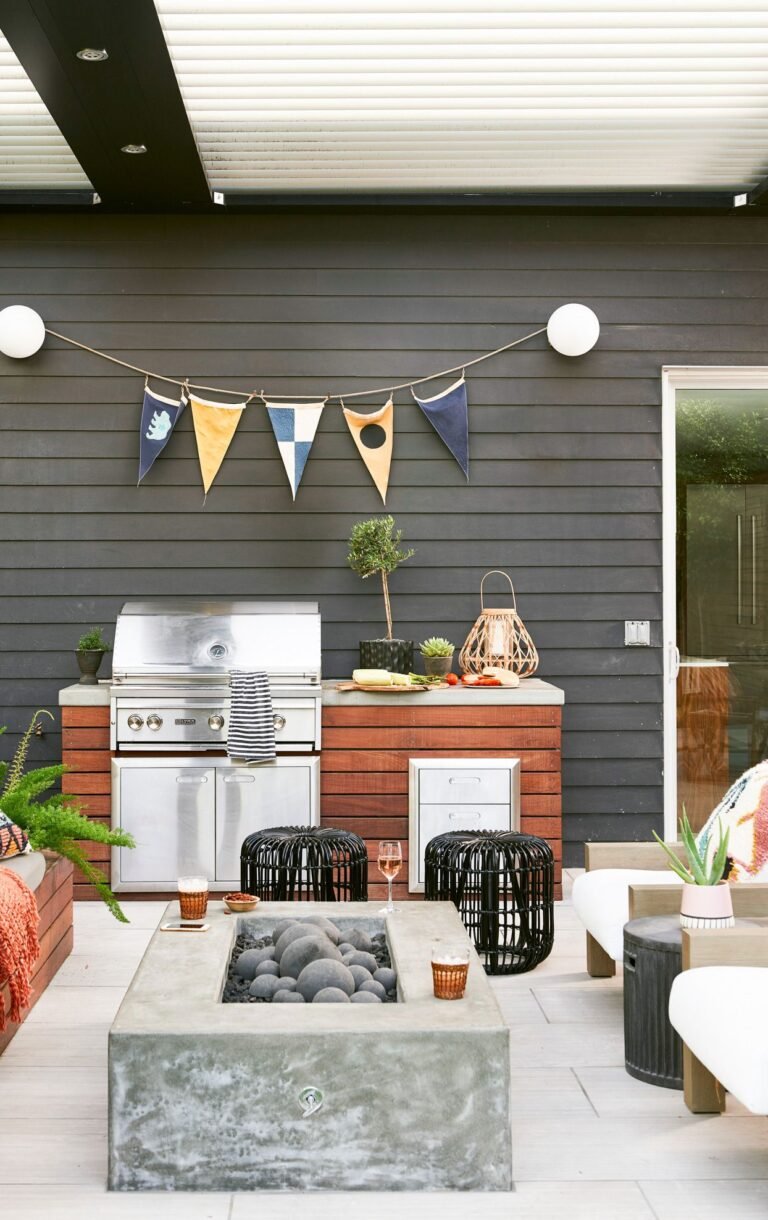Grilling is an art, yet many still fumble with the basics. A perfect BBQ can turn into a flop with simple errors.
Imagine the sun shining, friends laughing, and the grill sizzling—only for tough meat and burnt veggies to dampen the spirits. It’s easy to slip into common BBQ mistakes that can ruin a cookout. This post will guide you through avoiding these pitfalls, ensuring your next BBQ is a hit.
Everyone loves a good BBQ. The smoky flavor, the charred marks on a juicy steak, the laughter of family and friends—it’s what warm-weather weekends are made for. But beneath the surface of this idyllic scene lurk a dozen easy-to-make mistakes that can turn your backyard feast into a culinary catastrophe. From underseasoning to overcooking, each misstep can impact the taste and enjoyment of your meal. But fear not, whether you’re a seasoned pitmaster or a grilling novice, this guide will provide you with simple, straightforward tips to sidestep these common blunders. Get ready to fire up the grill with confidence and serve up a BBQ that’s nothing short of delicious.
Introduction To Bbq Blunders
Barbecuing is an art, yet it’s easy to make mistakes. Perfecting this craft takes patience and knowledge. Avoid common pitfalls to ensure a delicious BBQ experience.
Grilling Pitfalls
Many grill masters face challenges during their BBQ journey. Overcooking, wrong temperatures, and poor preparation are frequent issues. Recognize these to elevate your grilling game.
- Avoid lifting the lid too often; it lets heat escape.
- Don’t rush preheating; a hot grill ensures well-cooked food.
- Use a thermometer to check if the meat is done.
Pursuit Of The Perfect Bbq
Everyone wants their BBQ to be memorable. Focus on key elements to achieve this.
- Start with quality ingredients for the best results.
- Control the heat to cook meat evenly.
- Let meat rest after cooking for juicier bites.
Choosing The Wrong Type Of Grill
Choosing the right grill is crucial for a successful BBQ. The wrong choice can ruin your cooking experience. Let’s explore the main types and find the best fit for you.
Charcoal Vs. Gas Debate
The choice between charcoal and gas grills is a big one. Charcoal grills offer a rich, smoky flavor. They are perfect for those who love a classic BBQ taste. But, they take time to heat up. Gas grills, on the other hand, heat up fast. They offer more temperature control. This makes them great for quick, easy cooking.
Matching Grill To Cooking Style
Think about your cooking style before choosing a grill. Do you enjoy slow-cooking ribs? A charcoal grill might be your best bet. Prefer quick, weeknight dinners? A gas grill suits you better. Remember, the right grill enhances your BBQ experience.
- Charcoal Grill – Best for slow cooking and smoky flavor.
- Gas Grill – Great for fast cooking and easy use.
Choosing the right grill type is crucial. Your decision affects the taste and ease of your BBQ. Consider your cooking style and flavor preferences carefully.
Ignoring Pre-grill Preparation
Ready to fire up the grill? Hold on! Many miss out on key steps before the BBQ begins. Let’s talk about how vital pre-grill prep is. It’s about more than just having your food and tools ready. The grill itself needs attention to make sure your BBQ is a hit. Here’s how you can avoid common pre-grill mistakes.
The Importance Of Cleaning
Think of your grill as a cooking surface. Just like a kitchen stove, it needs cleaning. Old grease and food bits can ruin flavors. They can even be a health risk. A clean grill means tasty, safe food. Use a grill brush to scrub the grates. Do it before and after cooking. This simple act can make a big difference.
Preheating: A Crucial Step
Many skip preheating the grill. This is a mistake. Preheating helps with cooking food evenly. It also prevents sticking. Turn on your grill early. Give it 10 to 15 minutes to heat up. It’s like preheating an oven. You wouldn’t bake a cake in a cold oven, right? Same goes for grilling.
Misunderstanding Heat Zones
Grilling is an art that involves mastering the heat. One common mistake is misunderstanding heat zones. This can lead to unevenly cooked food. Let’s dive into how to set up your grill correctly.
Direct Vs. Indirect Grilling
Direct grilling means cooking food right over the heat. It’s great for quick-cooking items like burgers and steaks. Indirect grilling uses the space not directly above the flame. This method is ideal for larger cuts that need slower cooking. Using both zones will give you control and flexibility.
- Direct zone: Place food over flames for high heat.
- Indirect zone: Move food away from flames for lower heat.
Managing Temperature
Controlling your grill’s temperature is key. An instant-read thermometer can help. Check it often to avoid burns or undercooked meals. Here’s a simple way to manage temperature:
- Start with a hot grill to sear foods.
- Move them to a cooler zone to finish cooking.
- Adjust the heat as needed for consistent temperature.
Remember, keeping a steady heat is crucial. Fluctuations can ruin your barbecue. Watch the grill and adjust the heat to ensure perfect results every time.
Frequent Flipping And Fiddling
Frequent flipping and fiddling with meat on the grill is a common mistake. Many think it helps. It doesn’t. This habit can ruin a good BBQ. Let’s dive into how to avoid this and more.
Letting Meat Rest
After grilling, let meat rest. This means don’t cut it right away. Resting helps juices spread. Juices make meat tasty and soft. Aim for 5-10 minutes of rest time. Bigger cuts may need more. Use a warm plate to keep meat warm.
Resisting The Urge To Poke
Poking meat seems fun. It’s not good for BBQ. Poking releases juices. These juices keep meat moist. Use tongs to flip meat. No forks. This keeps the good stuff inside. Your BBQ will be better.
- Don’t flip too much. One or two flips are enough.
- Keep the lid closed. This keeps heat even. It cooks meat well.
- Use a timer. Guessing cook time is risky. Timers help.
- Check temperature. A meat thermometer is your friend. It tells you when meat is perfect.
Simple changes make a big difference. Good BBQ comes from patience and care. Avoid flipping and fiddling too much. Let meat rest. Don’t poke it. Follow these tips for a great BBQ.
Saucing Too Soon
Grilling up a storm means getting the details right. One slip-up to watch out for is saucing too soon. Mastering the art of timing can make or break that BBQ feast.
Timing Your Glazes And Sauces
Sauces are the secret weapon for flavor. But timing is key. Slather them on too early, and you risk everything. Your meat needs time. It needs to cook through before that sauce goes on. Aim for the last few minutes. That’s when you brush on the glaze. It’ll caramelize just right, giving you that perfect sticky coating.
Avoiding Burnt Offerings
No one wants their meal charred. Sugar in sauces burns fast. It turns bitter and black, ruining your hard work. Wait until those final moments. Then, add your sauce. This avoids the dreaded burn. You get meat that’s juicy inside, perfectly glazed outside. Just the way it should be. Keep an eye on the grill. Turn the meat often. This way, you serve up success, not ashes.
Overcrowding The Grill
Grilling is an art, and like any masterpiece, space is key. Overcrowding the grill is a common pitfall. It leads to uneven cooking and can dampen the flavors. It’s tempting to load up the grill to save time. Yet, this mistake can cost you the perfect BBQ experience. Let’s dive into how to avoid this with some simple tips.
Space Management
Give food room to breathe. This is crucial for grilling success. When items are too close, heat can’t circulate properly. This can result in some foods being undercooked while others are overdone. Think of your grill as a dance floor. Each item needs space to ‘move’ for an even char and optimum taste.
- Keep at least half an inch between smaller items.
- For larger items, an inch is better.
- Use the grill’s upper rack for less immediate heat.
- Remember, not every part of the grill is equally hot.
Cooking In Batches
Cook in stages to manage space better. Start with items that take longer. Then move to those that cook quickly. This way, everything comes off the grill at its best. It’s tempting to cook everything at once. But patience ensures each bite is as good as the last.
- Begin with meats that require more time.
- Add quick-cooking veggies later.
- Rest meat after cooking for juiciness.
By avoiding the trap of overcrowding, you ensure a better BBQ for all. Space management and batch cooking are simple fixes. They lead to delicious results every time.

Neglecting Food Safety
Neglecting food safety can turn a fun BBQ into a bad day. It’s easy to make mistakes that put guests at risk. This section covers two key areas: cross-contamination and proper cooking temperatures. Follow these tips to keep your BBQ safe and enjoyable.
Cross-contamination Concerns
Cross-contamination happens when germs from one food move to another. This often comes from using the same tools for different foods. Here’s how to avoid it:
- Use separate cutting boards for raw meat and other foods.
- Always wash hands after touching raw meat.
- Keep raw and cooked foods apart.
- Use different utensils for raw and cooked foods.
Proper Cooking Temperatures
Cooking food to the right temperature kills harmful germs. Use a food thermometer to check. Here are safe temperatures:
| Food | Safe Temperature |
|---|---|
| Beef, Pork, Lamb | 145°F (63°C) |
| Ground Meats | 160°F (71°C) |
| Poultry | 165°F (74°C) |
Let meats rest for 3 minutes before serving. This ensures safety and enhances flavor.
Miscalculating Cooking Times
Grilling the perfect meal is an art, but a common pitfall can turn it into a disaster. One of the biggest mistakes is miscalculating cooking times. This can lead to undercooked or overcooked food. It’s crucial to understand the time needed for different meats and cuts to achieve the desired doneness. Avoid guesswork. Use these tips to nail your cooking times and serve up a BBQ that’s just right.
Meat Doneness Mistakes
Not all meats cook the same. A thick steak needs more time than thin chicken breasts. Cooking a big pork shoulder? That takes hours. Small shrimp? Just minutes. Keep in mind the cut and thickness of your meat. Each one has its own time to shine on the grill. Remember, eyeing it doesn’t work. Meat changes color as it cooks, but that doesn’t always mean it’s done.
Using A Meat Thermometer
Forget the guesswork. A meat thermometer is your best friend at the BBQ. It tells you exactly when your meat is cooked to perfection. No poking or cutting needed. Just insert the thermometer into the thickest part of the meat. Make sure it doesn’t touch bone or fat. Check the temperature against safe cooking guidelines. Now you’re sure your BBQ is both delicious and safe to eat.
Forgetting To Rest Meat Post-grill
Grilling the perfect steak, only to cut into it too soon, is a common pitfall. Resting meat post-grill is a step many overlook. It’s not just about cooking; it’s about patience. Let’s dive into why you should never skip this.
Why Resting Is Essential
Think of resting as the finale of your grilling performance. It’s not optional. Resting allows your meat to reabsorb juices that have been pushed to the center. These juices need time to redistribute. Without resting, those flavorful juices end up on the cutting board, not in your meat.
Juiciness And Flavor
- Meat continues cooking slightly when off the grill.
- Resting prevents juice loss.
- Flavors develop during this time.
Let your meat sit covered loosely with foil. Small cuts need a few minutes. Larger roasts could use up to 20. Trust the process for the best taste and texture.
Skimping On Seasoning
Barbecue season calls for the perfect blend of smoke, heat, and flavor. Yet, one step often overlooked is seasoning. It can make or break your BBQ. Let’s dive into how to nail the seasoning game and ensure your meat is nothing short of mouthwatering.
Balancing Flavors
Getting the right flavor balance is key. Too little, your meat tastes bland. Too much, and it’s overpowering. Aim for a happy medium. Think of salt, pepper, and garlic as your base. Then build on that with herbs and spices. Remember, each spice adds a new layer. Start small and taste as you go.
When To Season
Timing is everything. Season too early, and you risk drying out the meat. Too late, and the flavors won’t meld. A good rule is to season just before cooking. This way, the salt and spices have time to adhere, creating a perfect crust. For thicker cuts, consider seasoning a few hours ahead. This allows deeper penetration, enhancing the overall taste.

Disregarding Vegetarian Options
Think all guests love meat at a BBQ? Think again. Many prefer plant-based dishes. Ignoring vegetarian options is a common BBQ mistake. This oversight can make some guests feel left out. It’s easy to include great veggie choices. Let’s dive into how to grill beyond meat and handle vegetable prep and placement.
Grilling Beyond MeatGrilling Beyond Meat
Plant-based burgers and sausages now offer meaty textures and flavors. They grill much like traditional meat. But, they often require lower cooking temperatures. Keep them away from the hottest part of the grill. This prevents burning.
- Preheat the grill on a medium setting.
- Oil the grill to prevent sticking.
- Time the grilling to avoid overcooking.
Vegetable Prep And Placement
Vegetables need prep too. Chop them into uniform pieces. This ensures even cooking. Use skewers for small veggies. It keeps them from falling through the grill.
| Vegetable | Prep Tip | Grill Time |
|---|---|---|
| Bell Peppers | Seed and quarter | 8-10 min |
| Zucchini | Slice lengthwise | 7-10 min |
| Mushrooms | Remove stems | 5-7 min |
Remember to season the veggies. Use foil packs for delicate items. This prevents charring. Place them on the cooler side of the grill. Check often to prevent overcooking.
Conclusion: Mastering The Grill
Grilling like a pro takes practice and knowing what not to do is key. Dodge these 12 BBQ blunders to enjoy perfectly cooked meals every time.
Grilling is an art. It takes practice and knowledge to do it right. But once you master it, your BBQs will be the talk of the town. Let’s wrap up by learning from common mistakes and taking your BBQ skills to the next level.Learning From Mistakes
Everyone makes mistakes, but smart grillers learn from them. Here are key takeaways:
- Don’t rush: Good BBQ takes time.
- Control the heat: Keep temperatures steady.
- Prep in advance: This saves time and stress.
- Use tools: Tongs and thermometers are your friends.
- Clean the grill: A clean grill means better tasting food.
Elevating Your Bbq Game
Now, let’s boost your BBQ skills with these tips:
- Patience: Let meats rest before serving.
- Experiment: Try new spices and marinades.
- Quality: Use the best ingredients you can find.
- Practice: Cook often to improve your skills.
Remember, practice makes perfect. Keep grilling and enjoy the process. Your next BBQ could be your best one yet!

Frequently Asked Questions
What Are Common Bbq Grilling Mistakes?
Grilling over high heat can cause charring, while not preheating leads to sticking food. Overcrowding the grill prevents proper cooking, and frequent flipping can prevent a good sear. Neglecting to rest meat after cooking results in lost juices.
How Can I Avoid Bbq Flare-ups?
Trim excess fat off meat to reduce flare-ups. Also, keep a portion of the grill empty to move food in case of a flare-up. Using indirect heat for fatty foods and not overfilling the grill with too much food at once can also help.
Why Is My Bbq Meat Tough?
Meat becomes tough when overcooked at high temperatures or if it’s a naturally tough cut. To avoid this, use a meat thermometer for precise cooking, choose the right cut, and consider marinating to break down tough muscle fibers.
What’s The Best Way To Clean A Grill?
Clean the grill while it’s still warm using a wire brush to remove residue. Soak the grates in soapy water if they’re very dirty. Regularly empty the grease trap to prevent fires and maintain a clean grill for the best cooking results.
Conclusion
Grilling perfection is within your reach. Avoid these common BBQ mistakes to shine at your next cookout. Remember, practice makes perfect. Keep it simple, check your heat, and always rest your meat. Use the right tools and seasonings for flavor that pops.
Grill with confidence and patience. Share these tips, and your BBQs will be the talk of the town. Happy grilling!






